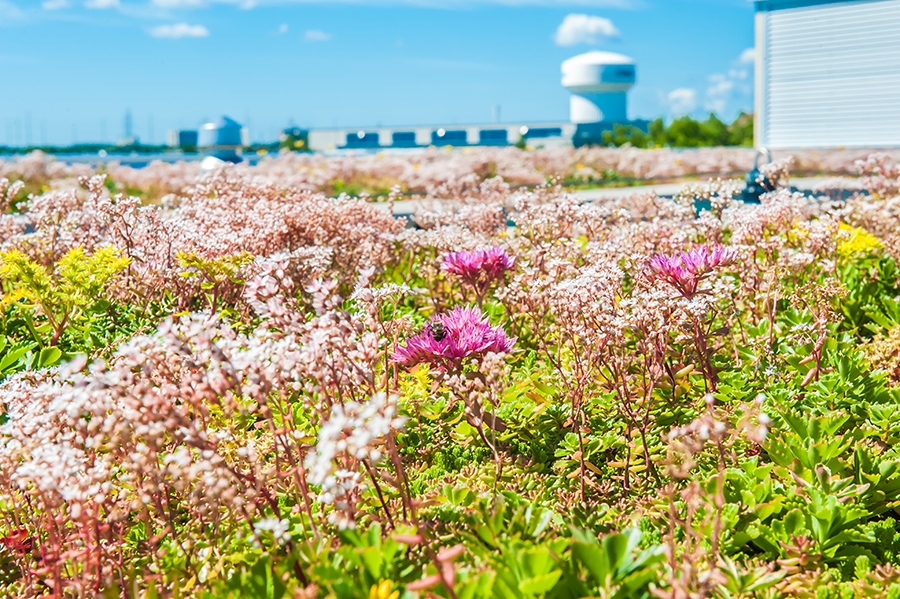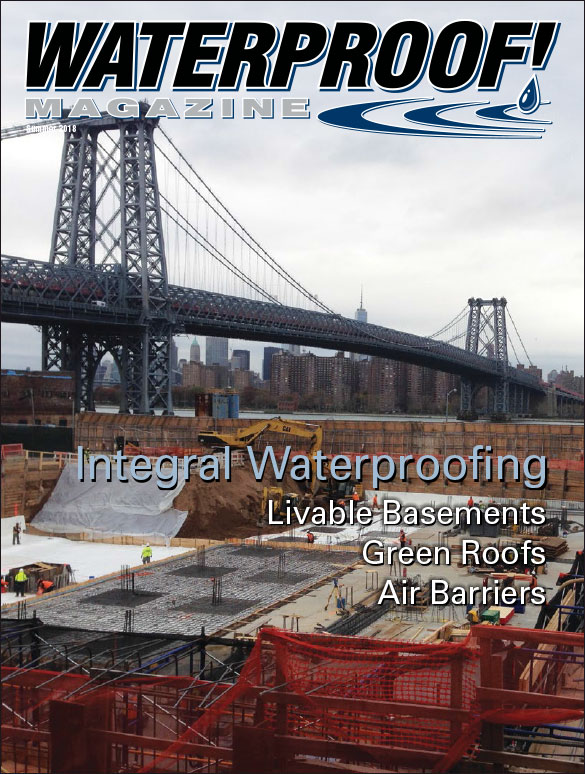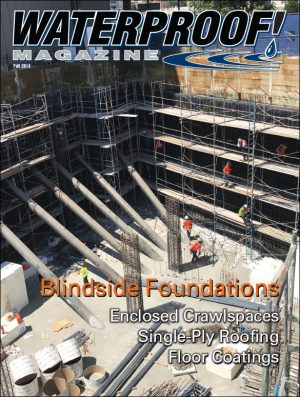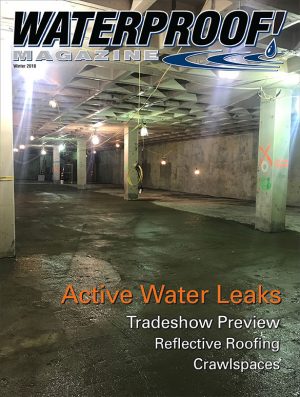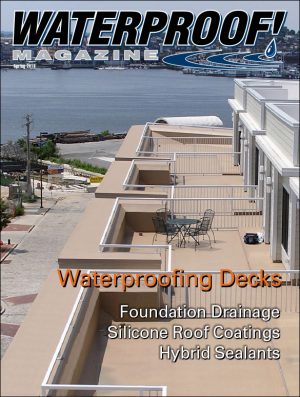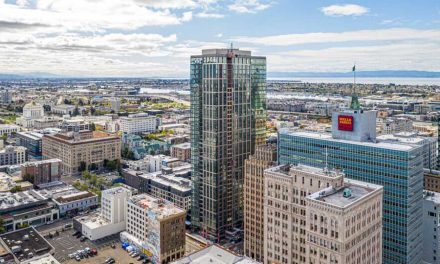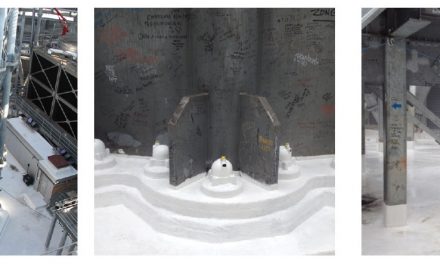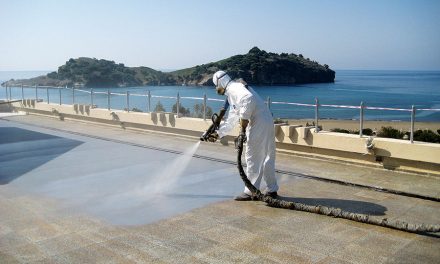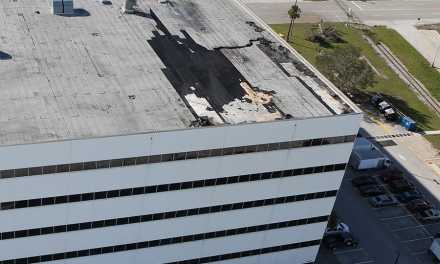Vegetated roofs offer numerous advantages, but waterproofing is the most critical component.
Vegetated or green roofs are not a new concept. The Hanging Gardens of Babylon, built thousands of years ago, is one famous example. This show of rooftop greenery was so spectacular that it qualified as one of the “seven wonders of the ancient world,” along with the pyramids of Egypt and the Parthenon in Greece.
Green roofs today can be just as impressive, and they’re gaining in popularity. Thanks to modern materials, they’re easier to install. State-of-the-art waterproofing and leak detection technology mean vegetated roof assemblies can provide decades of hassle-free service.
Green roofs can be installed on a wide range of structures. A few, located atop sprawling parking garages and industrial facilities, cover acres and acres. Others are installed on apartments and residences to provide space to relax, play, or grow vegetables.
The vast majority of green roofs are installed for more practical reasons. Vegetated roof systems are a proven solution to nagging urban problems such as stormwater runoff, energy consumption, smog, the heat island effect, and other issues.
Chicago was an early proponent of green roofing, and has more acres of planted rooftops than any other city. Other metro areas also promote these systems. Portland, Oregon, specifically recommends green roofs as a rainwater management solutions, along with Washington, D.C., New York City and Philadelphia. San Francisco recently passed a green roof bill mandating living roofs on most new construction. The legislation, effective Jan. 1, 2017, requires new roofs to incorporate solar panels or living roofs on a minimum of 15% to 30% of total roof square footage on projects. If the green roofs work as well as expected, it’s likely that other metropolitan areas will follow suit.
It’s difficult to describe a “typical green roof assembly” as the phrase encompasses everything from fields of native grass to tree-lined walkways. Climate, roof size, building type, acceptable roof loads, and so forth all influence green roof design. Yet the basic components remain the same.
According to Greg Raymond, the North American manager for Sopema’s vegetated roofing systems, “Waterproofing membranes are the most important component of the vegetated roof. Not only must waterproofing membranes prevent water from entering the building from the outside, but they must also be capable of resisting mechanical damage from tools and the penetration of plant roots. In addition, these materials should be capable of lasting many years without repair or replacement, as the roof garden will need to be deconstructed to perform any repairs.”
Other critical components include water retention and drainage systems, insulation, a root barrier, lightweight growing media, and the plants themselves. Raymond says, “These systems can be installed either as fully built-out systems or as lightweight, interlocking modular trays that reduce the installation time and offer pre-grown vegetated options.”
Nashville Music Center
One of the most notable recent green roof installations is the roof of Nashville’s Music City Center. The convention and exhibit center hosts a four-acre green roof with “hills” that mimic the local geography. They direct excess runoff to a 360,000 gallon rainwater collection tank for irrigation. The roof also hosts a guitar-shaped area enclosing 845 solar panels, both factors in the building being certified LEED-Gold upon completion.

Nashville’s Music City Center hosts a four-acre green roof reflecting the local topography.
“The Music City Center is a new landmark for Nashville,” remarked Robert J. Svedberg, the architect for the project. “The roof is a signature element of this project. It looks great and is performing very well.”
A PVC membrane from Sarnafil was used as water-proofing under the vegetative roof. As might be expected, installing a roof this large in the middle of a metropolitan area came with many challenges. “This is in a downtown area with lots of traffic,” said Andy Baker, vice president of Baker Roofing Company of Raleigh, North Carolina. “We were unloading as many as 12 trucks a day in that environment and moving things up to the roof, which required a lot of strategic planning.”
The architectural design of the roof also posed some concerns. The rolling “hills” were built with a suspended deck, and until the growing media was installed and could hold the deck down, it had to be held down with cables. “The cables were needed because the deck, before the building was enclosed, could twist and vibrate in high winds,” Baker explained. The cables were removed after the lightweight soil substitute was installed. The plantings are 14 different types of vegetation, mostly low-maintenance succulents.

Despite facing numerous obstacles, Baker Roofing was able to complete the project on-time and within budget. They won recognition as Sika Sarnafil’s 2013 Project of the Year.
“Everyone is fascinated by the roof; it is different every season and looks great,” says Mary Brette Clippard, marketing and public relations manager at Music City Center. She adds, “The green roof has done incredibly well on the utility matrix. During our first year of operation, we consumed 20% less energy and almost 40% less water than a conventionally designed building. We are hoping to set an example for how buildings can save energy with features like vegetative roofs.”
Logan Square Apartments
In Chicago, American Hydrotech partnered with the architectural firm of Brininstool + Lynch to create a unique rooftop recreational space at a luxury apartment complex.
Sitting atop the second-floor wing adjacent to the six-story apartment tower, the 1,200-sq. ft. amenity deck includes a dog run, barbecue pit, lounge chairs, and a grassy space for yoga, bocce and croquet. “When the weather warms up, the deck is slammed” says Brian Koles, the developer. The most eye-catching element is a decommissioned subway car that sits in a shallow reflecting pool. A bridge connects the patio deck to the rail car, which has been refitted with picnic benches and chromed diamond-plate panels.

American Hydrotech supplied the waterproofing products. Dennis Yanez, national marketing manager, says the shallow pool is kept watertight using Monolithic Membrane 6125, a fabric-reinforced liquid assembly that cures to a thick, tough, flexible, self-healing membrane. Completed in 2016, all 110 one- and two-bedroom units leased up within four months of opening.
New Jersey Offices
With a company name reflecting one of green roofs’ greatest benefits, Stormwater Capture Co. prides itself on being a one-stop shop supplying pre-vegetated green roofs.
The company offers several different systems, and one of the most popular is StormCap, which literally unrolls to create a green roof that is 85% vegetated at the time of installation.
Designer Mark Yanchuk specified StormCap for the new Johnson & Johnson World Headquarters in New Brunswick, New Jersey. It’s actually a series of green roofs, covering 4,600 sq. ft across seven atrium rooftops.
Cristina Senjug, who oversees marketing and communications at Stormwater Capture Co., says, “One of the main reasons the green roof was included in the design of the building was to reduce the stormwater runoff and protect local watersheds. The vegetated roof also helps increase the lifespan of the roofing membrane and keeps the building, and surrounding area, cooler on hot days.”
The system, which measures about 4½ inches thick, is installed after the insulation and waterproofing layer is in place. (Green roofs can be installed with the insulation either above or below the waterproofing layer.) A root barrier is laid over the roofing membrane, followed by a drainage mat, filter fabric, and water retention layer. StormCap uses a mineral wool water retention layer that eliminates the need for permanent irrigation. With the growing media in place, installers from Robert Ganter Contractors unrolled the pre-grown mats. These were planted with 10-12 species of sedum specially selected for their heat/drought tolerance and year-round visual interests, and delivered with 85% foliar coverage to provide instant green cover.
Completed in December 2017, the building was the first in the state to be awarded LEED-Gold (Existing Buildings).
Senjug says, “Research shows views of nature promote positive levels of well-being among employees and keeps employee performance at optimal levels. It’s good for the building, good for the environment and good for the employees and community. Win-win-win.”
Summer 2018 Back Issue
$4.95
Livable Basements
AVAILABLE AS DIGITAL DOWNLOAD ONLY
Description
Description
Additional Info
Additional information
| Magazine Format | Digital Download Magazine, Print Mailed Magazine |
|---|

